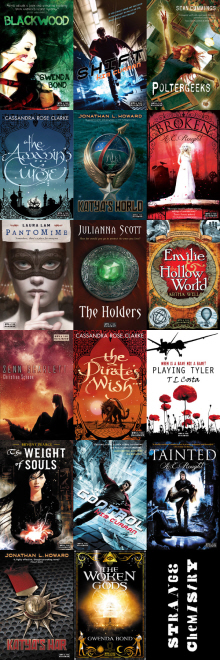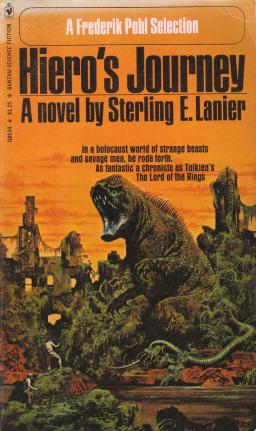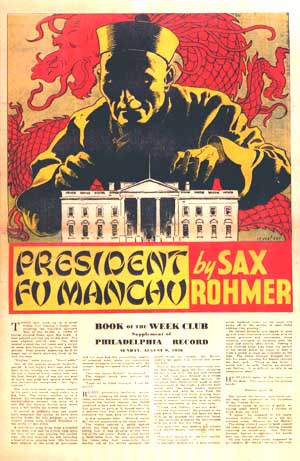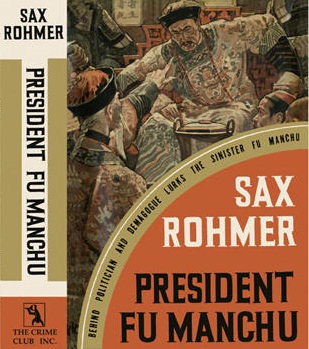Black Gate Online Fiction: The Death of the Necromancer, Part Five
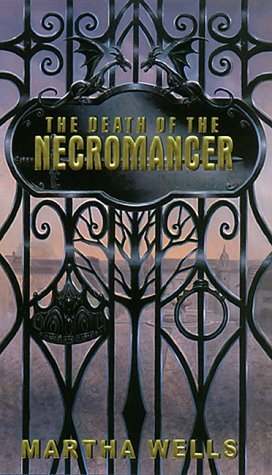 Black Gate is very proud to present the final installment of Martha Wells’s Nebula Award-nominated novel, The Death of the Necromancer, presented complete online for the first time. In his SF Site review Wayne MacLaurin wrote:
Black Gate is very proud to present the final installment of Martha Wells’s Nebula Award-nominated novel, The Death of the Necromancer, presented complete online for the first time. In his SF Site review Wayne MacLaurin wrote:
The setting is a gaslit European continent that has familiar sounding names (Vienne, Lodun) and comes complete with steam engines and revolvers. But magic works and sorcerers walk the streets of the cities, have a great university and hold positions of power at the courts… The plot revolves around Nicholas Valiarde, a disgraced nobleman, consumed with the desire to revenge the wrongful death of his godfather. He also happens to be the greatest thief in all of Ile-Rien (a helpful talent which, I am sure you can see, would significantly help with those late night prowls around your arch-enemy’s estate)…
Valiarde’s revenge starts getting interrupted by a series of increasingly bizarre, unexplainable events. Somebody, or something, with significant magical ability begins to oppose him. More chilling is the obvious taint of necromancy — and necromancy is an art that has been outlawed for centuries…
The Death of the Necromancer is a fabulous read and earns my vote for “Most Exciting New Book of the Summer!”
Martha Wells is the author of fourteen fantasy novels, including City of Bones, The Element of Fire, The Cloud Roads, and The Serpent Sea. Her most recent novel is the YA fantasy, Emilie and the Hollow World, published by Strange Chemistry Books in April. Her previous fiction for us includes “Reflections” in Black Gate 10, “Holy Places” (BG 11), and “Houses of the Dead“ (BG 12). Her most recent article for us was “How Well Does The Cloud Roads Fit as Sword and Sorcery?,” which appeared here March 13. Her web site is www.marthawells.com.
The complete catalog of Black Gate Online Fiction, including stories by Mary Catelli, Michael Penkas, Vera Nazarian, Ryan Harvey, Nina Kiriki Hoffman, E.E. Knight, C.S.E. Cooney, Howard Andrew Jones, Harry Connolly, and many others, is here.
The Death of the Necromancer was originally published in hardcover by Avon EOS in 1998. The complete, unedited text is being presented here; it began on June 2 with the first four chapters here.
Part Five includes Chapters Nineteen through Twenty-Two. It is offered at no cost.
 A couple Wednesdays ago, I did something I haven’t done in ages. I went down to my local comic store on new-comic day (which is Wednesdays) and bought a new super-hero comic off the rack. Not a Marvel or DC book, though — not really, though it was published by DC’s Vertigo imprint. This was the return of a series first published in 1995, under the Image Comics banner. The title’s moved around a fair bit since, and frequently been on hiatus from regular publication. But it’s back now, and hopefully for a long time to come. It’s Kurt Busiek’s Astro City, and I want to talk about what it is and why I’m going to be buying it going forward.
A couple Wednesdays ago, I did something I haven’t done in ages. I went down to my local comic store on new-comic day (which is Wednesdays) and bought a new super-hero comic off the rack. Not a Marvel or DC book, though — not really, though it was published by DC’s Vertigo imprint. This was the return of a series first published in 1995, under the Image Comics banner. The title’s moved around a fair bit since, and frequently been on hiatus from regular publication. But it’s back now, and hopefully for a long time to come. It’s Kurt Busiek’s Astro City, and I want to talk about what it is and why I’m going to be buying it going forward.
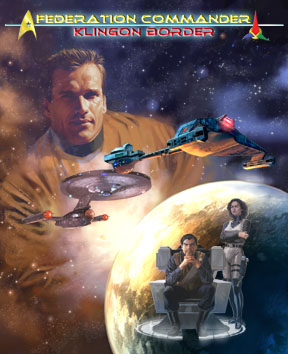

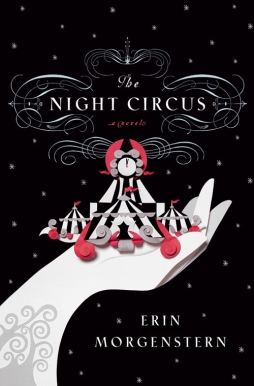 ‘Magic’ is an elastic metaphor. Among its many possible uses is that of a descriptor for something that happens in performance, especially live performance: the magic of an actor possessed by a character, the magic of a given moment invested with wonder and remaining in the memory, though inevitably passing away. The magic of stage magicians isn’t in the sleight-of-hand; it’s in the effect on the audience. The related magic of the carnival — the amusement park, the theme park — is a kind of second-person secondary-world magic. You are there. You are in a conjured fantasyland. A circus, in this reading, isn’t about the stink of animals or the scutwork of putting up tents and preparing performance spaces; it’s about the feeling the show tries to inspire. It is, potentially, for some, a venue for magic — transient, susceptible to thinning, but capable of generating wonder.
‘Magic’ is an elastic metaphor. Among its many possible uses is that of a descriptor for something that happens in performance, especially live performance: the magic of an actor possessed by a character, the magic of a given moment invested with wonder and remaining in the memory, though inevitably passing away. The magic of stage magicians isn’t in the sleight-of-hand; it’s in the effect on the audience. The related magic of the carnival — the amusement park, the theme park — is a kind of second-person secondary-world magic. You are there. You are in a conjured fantasyland. A circus, in this reading, isn’t about the stink of animals or the scutwork of putting up tents and preparing performance spaces; it’s about the feeling the show tries to inspire. It is, potentially, for some, a venue for magic — transient, susceptible to thinning, but capable of generating wonder.